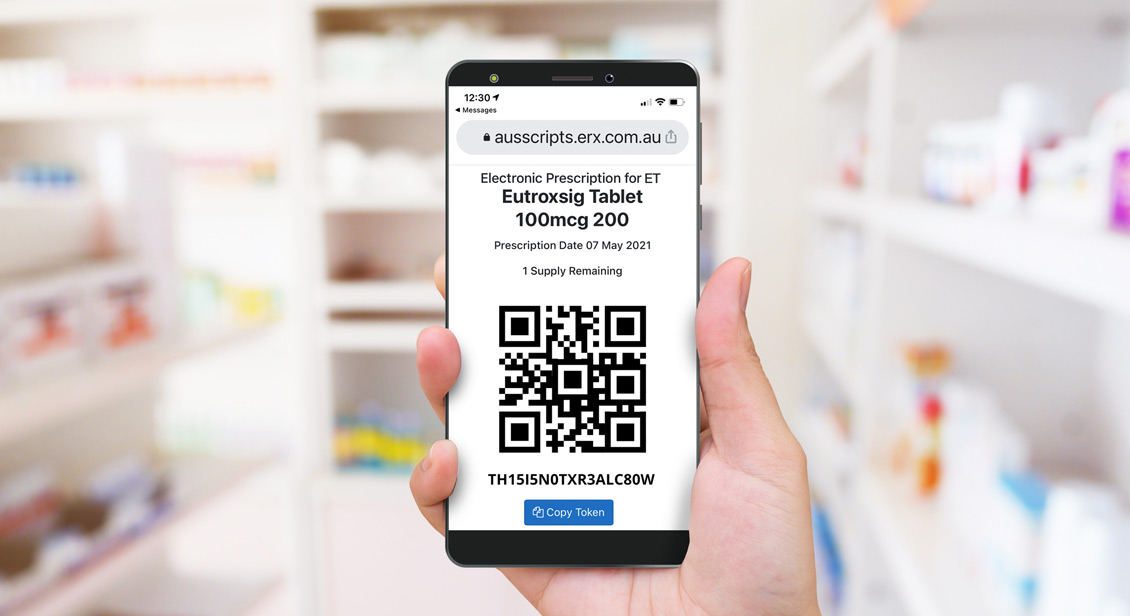General

eScript: what is it and how does it work?
An eScript, or electronic prescription, is a digital alternative to a paper script. It's a convenient and efficient way to get your medicine from your local pharmacy using QR code technology, which you may already be familiar with.
In this article, we guide you through what eScripts are, how they work and the benefits of using them:
- What is an eScript?
- How do eScripts work?
- How repeat prescriptions work
- Benefits of using eScripts
- When will eScripts be available?
- Are eScripts safe?
- What you need to receive and eScript
- Are paper scripts still available?
What is an eScript?
An eScript is a digital version of a paper script. It’s sent to you by text or email by your doctor and appears in the form of a QR code, or electronic token, as it’s also referred to.
eScripts are different to the image-based prescriptions where your doctor takes a picture of a handwritten script and emails or faxes it to your pharmacist. An eScript can only be sent directly to you, your doctor can’t send it to your pharmacist.
How do eScripts work?
- Instead of handing you a paper script, your doctor sends you a text message or email containing a link to a unique QR code, or token.
- Take your smartphone (or tablet - whichever contains the message) to your local pharmacist and show them the QR code. You can also forward the message to your pharmacist if they offer a home delivery service.
- Your pharmacist scans the QR code to retrieve the details of your script and dispenses as normal.
If you have more than one medication prescribed, your doctor will send you a token for each one. The message contains the name of the medicine so you can tell the difference between each script you receive.
Once your pharmacist scans the QR code and dispenses your medication you can no longer use the same token, so it's best to delete each message once you have received your medication. You can always check whether an eScript has been filled by clicking the link in your message, it tells you whether it’s been filled or is no longer available.
If a carer or family member normally collects your medicine on your behalf, all you need to do is forward them the message so they can continue to collect it for you.
How repeat prescriptions work
For repeat prescriptions, your pharmacist will send you a new QR code after each repeat is dispensed. This happens until all the repeats are complete, so you will need to keep the new message until it’s time to get your medicine again.
If you accidentally delete a message with a QR code you will need to go back to your doctor to ask for a new eScript, just like you would if you lost a paper script.
Benefits of using eScripts
- They can help to reduce medication mistakes caused by illegible handwritten scripts.
- There's no need to worry about lost paper scripts as you will have the script in the form of a text or email.
- eScripts support telehealth services so there's no need to visit your doctor in person to pick up your script.
- Less paper means more environmentally friendly.
When will eScripts be available?
eScripts are available for use across Australia. Just check with your doctor and local pharmacy to see whether they’re prescribing and dispensing medicine electronically.
Are eScripts safe?
Yes. Your details and script are kept private and secure through encryption (a secure way of sending information). Your script can only be ‘unlocked’ by your pharmacist.
What you need to receive an eScript
You need a smartphone to receive your eScript by text or an email address and account you can access on your smartphone (or tablet) to take to your pharmacist. It’s a good idea to check your doctor and pharmacist have your correct mobile number and/or email address on file to ensure the script is sent to you.
If you don’t have a smartphone or email address, your sript can be sent to a family member, friend or carer on your behalf.
Are paper scripts still available?
Yes, you can still ask for a paper script if you’re not ready to switch to an electronic script.
For more information on eScripts visit the Digital Health government website.
This post was updated 6 December, 2022.